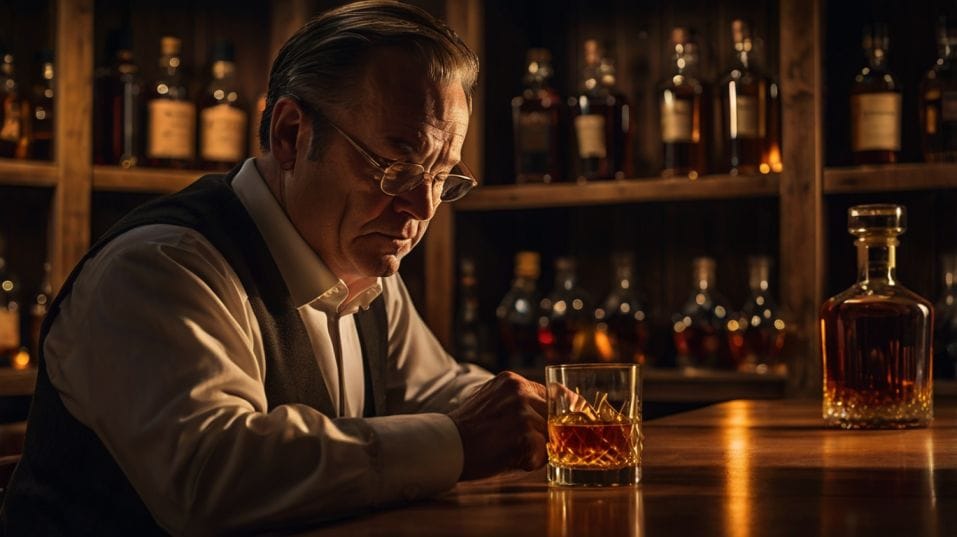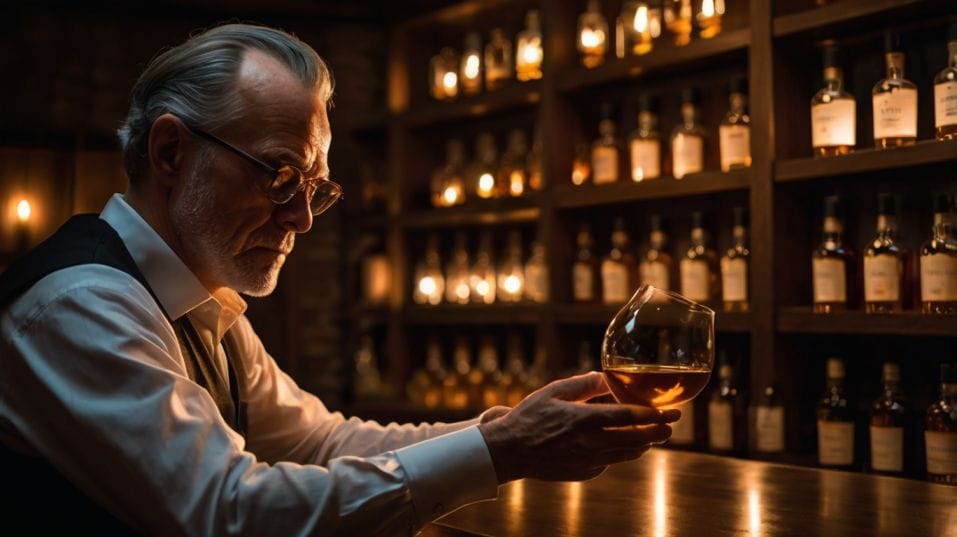The 3-Step Process to Tasting Like a Judge
Learn how to taste whiskey like a judge. Master visual, nose, and palate techniques to build real confidence in every glass you pour.

What if you could taste whiskey like a judge—not just drink it, but decode it? For whiskey-curious drinkers early in their journey, that skill isn’t out of reach.
It starts with a shift in mindset: curiosity over confidence, process over guesswork. You don’t need years of experience—just the right method.
This 3-step approach will sharpen your senses and build the kind of palate that understands what makes a pour truly memorable.
Step One: Look Before You Leap
If you’re skipping the visual inspection, you’re already missing data. Judging begins with the eyes because color, clarity, and texture set the stage before anything hits your nose or mouth.
And this isn’t about poetic guesses like “mahogany sunset” or “topaz glow.” It’s about useful observations.
Color
Color tells a story. A deep chestnut hue might suggest time in heavily charred oak or sherry casks. Pale straw? Maybe a younger age or a refill barrel.
But here’s the trick: don’t treat color as a promise. Treat it as a signal—something to file away as context, not conclusion.

Clarity and Opacity
Clarity and opacity are next. Hazy whiskey? Could be non-chill filtered or proofed high enough to cloud with water.
Crystal clear? Maybe it’s been chill-filtered for shelf stability. Neither is “better,” but it tells you how the whiskey was handled—and that informs how it might taste.
Legs
Now swirl gently. Watch the legs—those trails of liquid sliding down the inside of your glass. Fast and thin? Possibly lighter bodied, higher in alcohol, or both.
Slow and syrupy? Likely richer, with heavier oils or sugars. Legs aren’t magic, but they’re another signal. Tasting like a judge means reading every clue—without overthinking it.
Every visual detail is pre-nose intelligence. It's not just what the whiskey looks like. It’s what it might do. And that’s how real tasters start building context.
Step Two: Smell Like You Mean It
This is where most people fall short. They nose too fast, too shallow, or with no real plan. A judge? They know the nose is where most of the tasting happens.
If you're skipping this step or treating it like an afterthought, you're blindfolding yourself.
Nosing Technique
Start at a distance. Let the vapor rise. You’re not trying to huff fumes—you’re trying to read layers.
Hold the glass just under your nose and take a slow breath, then move in closer for short, controlled sniffs. Don’t jam your face into the glass. That’s a shortcut to olfactory overload.
Breathe Right
Try nosing with your mouth slightly open. This relieves pressure and softens the alcohol burn. It also activates different receptors—subtle, but real. You’ll pick up more detail, more nuance, and fewer false positives.
Don’t Chase Notes
Go slow. Don’t chase flavors. Let them come to you. You might notice fruit, wood, spice, smoke, grain, or floral notes. But don’t rush to label everything.
A judge isn’t scoring vocabulary—they’re tracking balance, integration, and development. You’re doing the same.
Revisit the nose after a few minutes. Air exposure changes things. New notes rise, others fade. That evolution matters.
A whiskey that opens beautifully over time usually has layers worth discovering. A flat nose after five minutes? Might be one-dimensional.
The more time you spend smelling, the more your brain starts to build its internal library.
Eventually, you won’t just say “apple”—you’ll think green apple skin, not juice or dried apple slice, not fresh. That’s when things get serious. That’s when your palate starts to become reliable.
Step Three: Taste Like You’re Tracking Something
By the time a judge takes their first sip, they’ve already built a mental map. Now it’s time to test it. Your job isn’t to confirm your guesses. Your job is to chase structure and evolution. That means tasting like a tracker, not a sipper.
First Sip = Calibration
Your first sip is calibration. You’re not evaluating yet—you’re prepping. That hit of alcohol is your palate adjusting. Let it coat your mouth. Don’t swallow too fast. Don’t obsess over what it tastes like. Just feel how it behaves.
Follow the Structure
After that, go in again with focus. This time, chase transitions. Great whiskey has movement. It doesn’t sit still on your palate. It starts somewhere, shifts gears, and ends with something new.
That progression—from front to mid-palate to finish—is the structure. That’s what judges score. That’s what separates a solid pour from a memorable one.
Texture Matters
Pay attention to texture. Is it silky, gritty, dry, oily? Texture is one of the least talked-about aspects of tasting, but one of the most important. It tells you about mouthfeel, balance, and how well the whiskey carries its flavors.
Bitterness, sweetness, acidity, astringency, spice—these are the tools in the whiskey’s arsenal. The best pours use them strategically.
You’re not looking for absence. You’re looking for control. A drying finish isn’t bad—it’s only bad if it overwhelms. Sweetness isn’t cheap—it’s only cheap if it’s flat.
Finish Strong
Now ask: does it linger? That finish tells you about quality. A good whiskey should evolve even after it’s gone. Does it dry out? Does it leave a ghost of spice or fruit? Does it vanish? The aftertaste is the final clue in a well-structured pour.
Water as a Tool
Water is your tool, not your crutch. Add a few drops and retaste. Does it bloom or flatten? Some whiskeys open up with dilution—others unravel. That response is part of the story. It teaches you how volatile the balance really is.
Final Thoughts
Tasting like a judge isn’t about memorizing flavor wheels or showing off with obscure notes. It’s about discipline, attention, and building a palate you can trust. You’re developing a process that goes deeper than “good” or “bad.”
You’re learning how to recognize why something hits or misses—and that’s what separates casual drinkers from confident collectors.
So here’s your move: take something off the shelf—preferably something you think you already know. Then slow down. Look. Smell. Taste with precision.
Don’t rush it. Don’t overanalyze. Just listen to what the whiskey is telling you. Start building that internal library—today.




